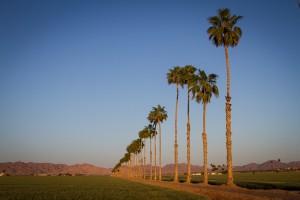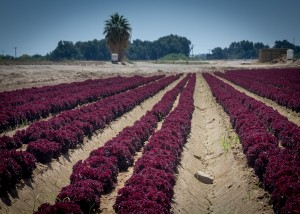William Yardley writes in the Los Angeles Times about the water rights and water fears in Yuma, Arizona:
If you eat a green salad between Thanksgiving and April, whether in Minnesota, Montreal or Modesto, odds are good that some of it was grown in or around Yuma.
The summer freshness on all of those winter plates reflects the marvel of engineering the Colorado has become — and why managing the river in the Southwest’s changing landscape seems so daunting.
I’m glad to see Yuma get its due. I’ve spent a bunch of time there in the last few years, and it’ll feature prominently in my book, because it’s both historically important (early river crossings always are, stuff grows up around them and influences the human geography that comes after) and because, as Yardley explains, its farming has become a critical piece of the Colorado River water puzzle. Per acre, Yuma and the Imperial County across the river are the most valuable farm land in the Colorado River Basin. That’s one of a number of lines of evidence suggesting that, in economic terms, they’re putting their water to good use. But for better or worse (often worse) Imperial seems to get most of the press.
Notably, the shift to winter produced described in Yardley’s story has been accompanied by a significant reduction in water use in Yuma, even as farmers are making more money. This isn’t a water policy-driven water conservation story. This is an agricultural economics-driven water conservation story. This is why I’m so interested in understanding and writing about Yuma (and the story of Imperial in California, where water use also is down, though for more complex reasons).
The deal here is that Yuma has some of the best rights on the Colorado River, meaning that under the law, as the river gets lower and lower, the Yuma County farmers continue to get water while other people get cut off. Other people in particular meaning the greater Phoenix metro area. This worries the Yumans*:
They know they have water priority but not necessarily political priority.
“They believe there’s a target on their backs,” said Tom Buschatzke, who leads the Arizona Department of Water Resources. “I believe they’re right.”
Farmers here do not intend to go quietly. Some come from families that were here when the big cities of the modern Southwest were little more than crossroads.
“We have a legal right to this,” said Mark Smith, who farms about 500 acres in Yuma and leads one of six irrigation districts in the area. “The guys who say this is an easy fix — it’s not an easy fix. We’re growing vital crops.”
I heard a lot of talk when I was in Yuma along these lines, fears about the target on their back. I personally don’t see the risk as great. For reasons that I’ll argue in detail in the book, I think the only way water moves out of the Yuma area to other purposes will be on the Yuma farmers’ and water districts’ own terms. I don’t see the big metro areas taking it by force.
But that’s just me. No doubt Tom Buschatzke knows much better than I what the risks are, so I’ll defer to his judgment about target placement.
If you’re down there in the winter, be sure to drive across the river to Bard, too, and stop off at one of the blood orange stands. Yum. It’s technically in California, but it’s really part of the greater Yuma farming community, and it’s especially lovely. I mean, I realize irrigated desert farming is an acquired taste, but I’ve grown quite fond of the place.
* Yup. They’re called “Yumans”. The name derives from the native people who have lived here a really long time. Before the European immigrants moved in and muscled them out of the way, the Yumans practiced flood recession farming, starting to plant as the high water from the spring floods receded and following the water down, planting in the wet soil as the river dwindled through the summer. I love Yuma.



when it comes to being sustainable the problem appears to end up being that any reasonable regulaions which attempt to regulate a resource are often subverted and the resource gets overexploited until it becomes worthless until it can naturally regenerate.
you can see this in the CA groundwater regulations (basically allowing the status quo for another 10-20 years) and what has happened to AZ regulations (gotten around by special interests).
i give them credit for trying, but the teeth and enforcement must be in there right from the start.
right now the problem exists and embedded interests say that they can’t change quickly… well guess what embedded interests? you may be forced to change now anyways if the drought persists…
you’ve gotten a small reprieve by May rains and recent rains from Delores. if you are lucky you get more rains and a break from El Nino. use the time wisely and make the changes now.
My guess on the palm trees shot was taken from Hwy 95 at the vicinity of county roads E8 & E9. I lived on E9 forty years ago.
dg
DG, you never cease to amaze! It’s from E7 looking east toward E8 & E9, just a hundred yards or so north of Hwy 95. I was so struck by the palm trees lining the ditch in the middle of a wheat field, I pulled around and waited and watched for the late light. There were red-winged blackbirds in the field, I kept trying to get a picture of ’em but I didn’t have a bird lens and none of the bird pictures came out. Gorgeous farmland.